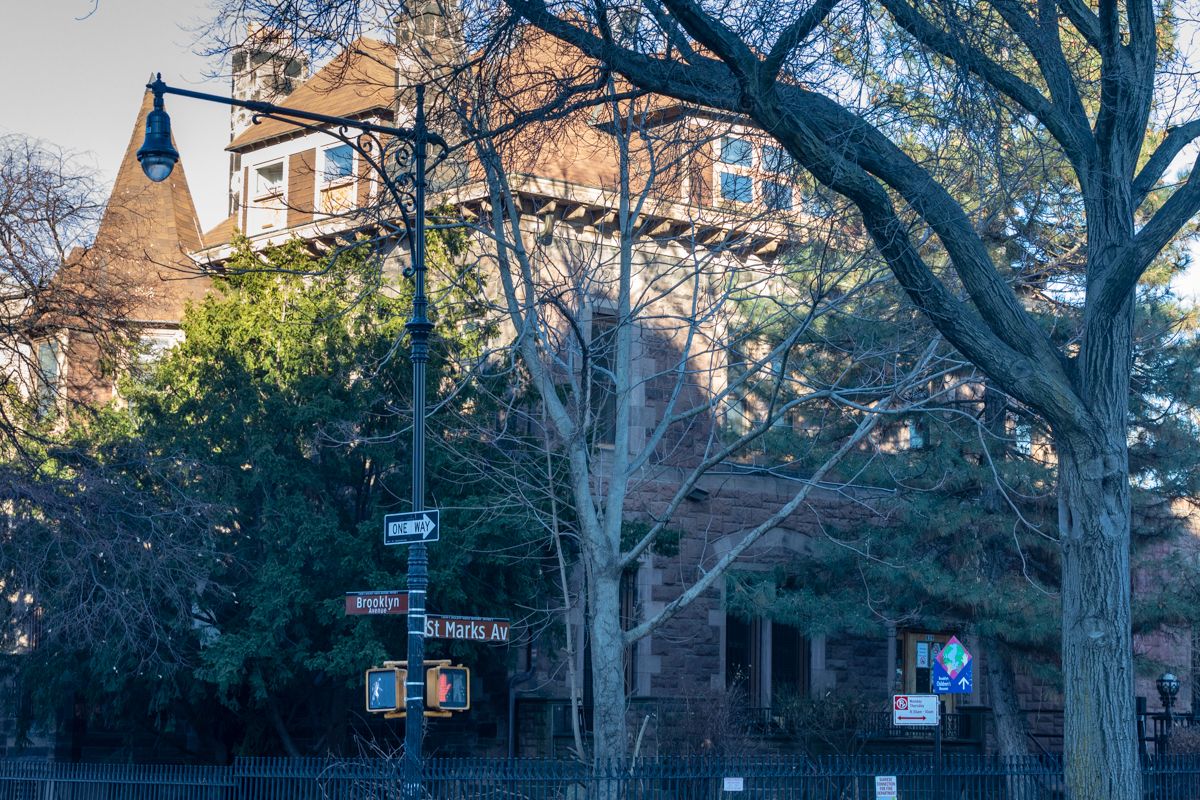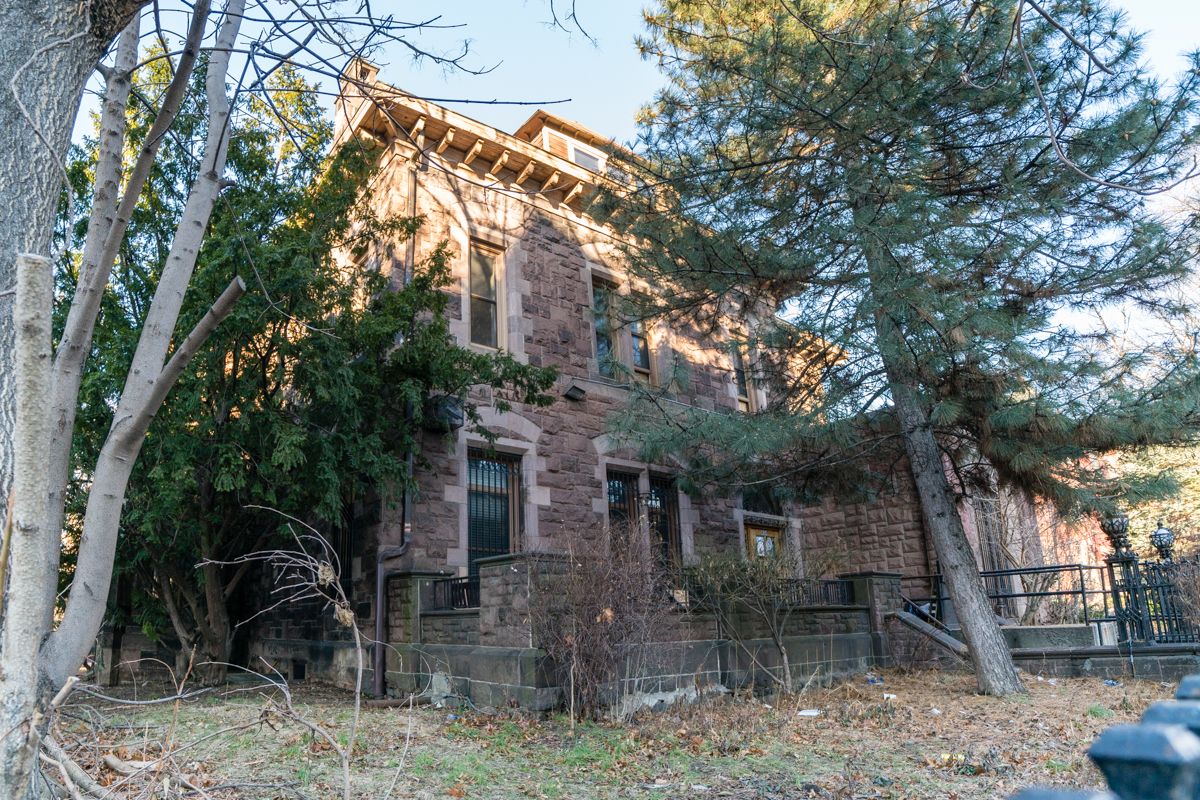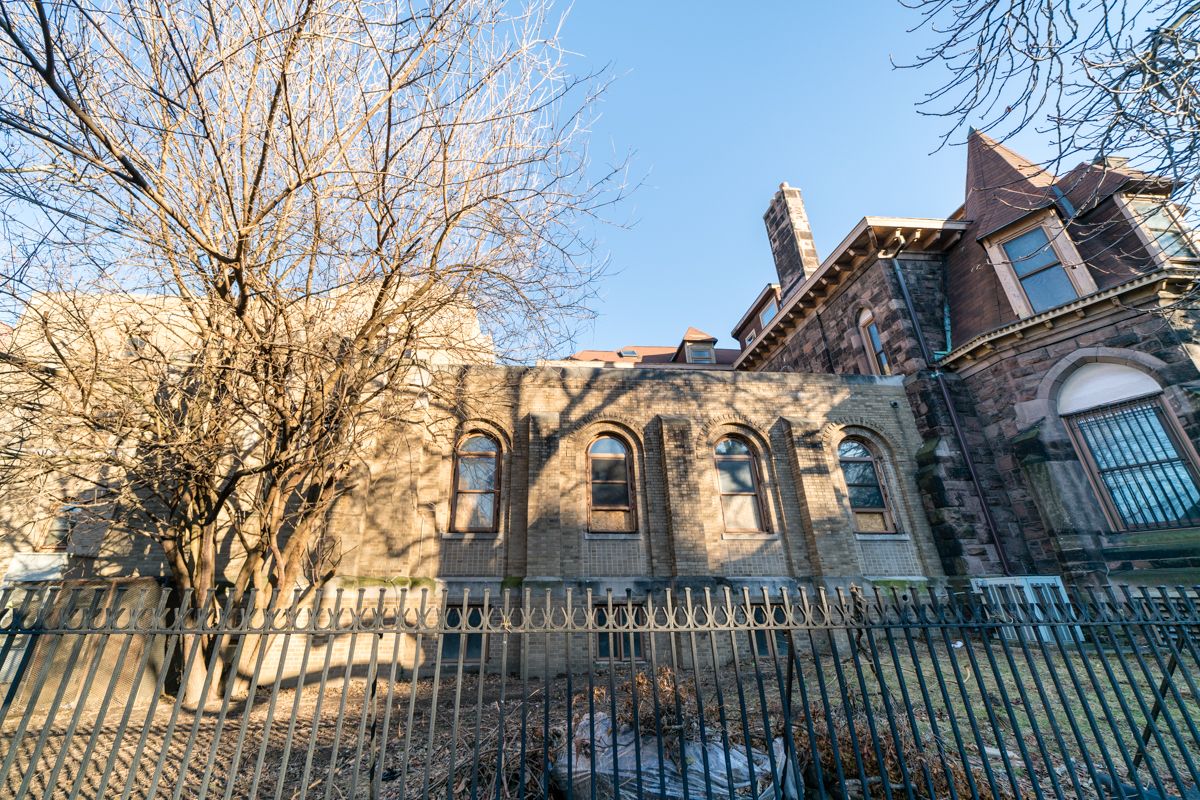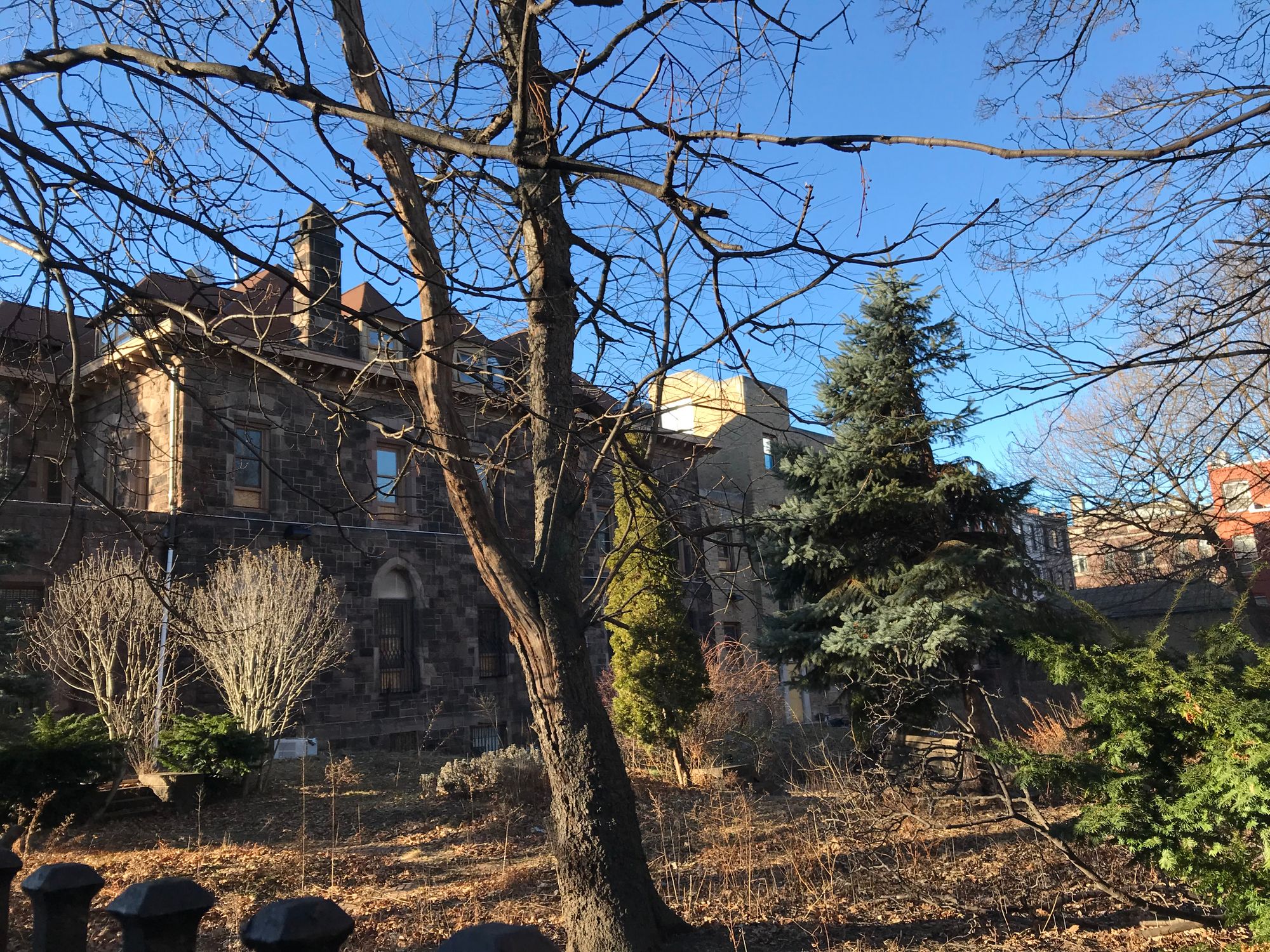Crown Heights Community Group Fights To Save Historic Dean Sage Mansion

CROWN HEIGHTS – Crown Heights neighbors are standing up against the New York City Landmarks Preservation Commission (LPC), New York City Housing Preservation & Development (HPD), and the Institute for Community Living (ICL) in an effort to save the historic Dean Sage Mansion located at 839 St. Marks Avenue (at Brooklyn Avenue), the second oldest mansion in Crown Heights North and last remaining with its original formal parterre garden.

ICL, a NYC-based non-profit organization that provides housing and social services to people with mental and developmental disabilities, purchased 839 St. Marks Avenue in 1998 and until recently had used the facility as supportive housing for 48 clients.
At a Community Board 8 meeting in March 2016, ICL presented plans to tear down the property’s three-story extension facing Brooklyn Avenue and replace it with a five-story, L-shaped building that extends east of the original house and onto the garden. The new extension would house approximately 30 affordable- and 45 supportive-housing units.

The plans angered local residents and community groups, including the St. Marks Avenue Independent Block Association and the Crown Heights North Association, who insist the construction will have a “negative impact on our community’s sense of pride,” “destroy the mansion’s formal gardens,” and “architecturally overwhelm the mansion and the historic streetscape,” according to a statement.
“The idea of historic districting is to preserve the story of our past as a country, as a people, as a community,” Robyn Berland, one of the neighbors fighting against the development, told BKLYNER. “Community Board 8 voted against the project saying it was inappropriate in a historic district. The house is on the national and state registers.” The mansion is within the Crown Heights North Historic District designated in 2007.
“You’d have to be blind not to see that the [proposed] building itself does not fit into the streetscape, and that it diminishes the property in a historic district,” Berland continued. “The idea of historic districting is to protect the historic nature from development that takes away from its value…. [The LPC’s] decision…does not fall within their purview in terms of preserving a historic district or deciding that a new project fits in…with the streetscape,” she insists.
Ideally the group would like to set up a non-profit to maintain the property at 839 St. Marks Avenue and establish it as a community center focused on the history of the house and the Sage family.

The mansion dates to 1870 after Dean Sage commissioned his friend, renowned architect Russell Sturgis, to design the High Victorian Gothic home, “one of the jewels of Crown Heights North,” according to a 2014 Brownstoner article. Sage was the son of Henry W. Sage, who made a fortune selling lumber and gave generously to Cornell University, notably financing its first women’s dorm. Mark Twain, a longtime friend of Dean Sage, stayed at the mansion in 1875.
A series of prominent families occupied the house in the following years. In the 1930s the neighborhood began to change, Brownstoner adds, and the many mansions along St. Marks Avenue, collectively known as “the St. Marks District,” were torn down for apartments. The Dean Sage Mansion was spared but never again served as a single-family residence.
ICL purchased the building in 1998. In April 2016 the LPC granted ICL a “Certificate of Appropriateness” for their plans to redevelop the site, in spite of objections from Brooklyn Community Board 8 and neighbors.

If ICL goes forward with its plans “the very concept of Historic Preservation Districting will be undermined in Crown Heights and throughout New York City,” according to a statement by the community group opposing the project.
“We cannot afford to lose another link to our cultural past, core values, and history’s lessons to a developer’s greed and our City government’s negligence in managing housing development,” their statement adds.
The Crown Heights neighbors are not alone in their criticism of the LPC. A Brownstoner article last month reported on preservation groups across the city debating recent decisions made by the LPC and “question[ing] the agency’s commitment to preserving the architectural heritage of the city.”
“After careful consideration, on April 12, 2016, the Landmarks Preservation Commission approved an application for a Certificate of Appropriateness to alter the façades, demolish an addition and construct a new building at 839 St. Marks Avenue, known as the Dean Sage mansion,” Zodet Negrón, a spokesperson for LPC, wrote to BKLYNER.
“The Commission found that the proposed changes will not detract from the special historic and architectural character of the mansion or the Crown Heights North Historic District. See decision here. We cannot comment any further as there is pending litigation on this,” she concluded.

While ICL previously ran a supportive housing service at the mansion, the organization has been granted a new deed for residential housing.
“We had been at the very beginning assured that this was a non-profit venture and that they were only expanding their supportive housing resources and it’s now morphed into more affordable housing and they’ve redone the deed so it’s no longer non-profit but profit-bearing and therefore goes beyond the original deed that allows supportive housing only,” Berland explained.

The group started a petition against the construction plans and has taken ICL to court. Among the group’s objections to the Certificate of Appropriateness granted by the LPC:
- The NYC LPC’s decision to permit the addition of a new building to the site without establishing a regulatory policy or even a Master Plan for the District is “arbitrary and capricious” and should be annulled.
- The Certificate ignores the adverse impacts…that will result from the planned alterations to the Dean Sage Mansion.
- The Certificate permits the alteration of the Mansion’s facades, the demolition of a historically and architecturally unique addition to one of the oldest and most important nineteenth-century mansions remaining and the destruction of the Mansion’s parterre garden.
- The L-shaped building is out of scale and overwhelms the architectural and historical context of the streetscape as established by the New York City Landmarks Preservation Commission designation in 2007.
In November 2017 a judge issued a stop order for any work on the property’s formal garden but allowed demolition of the 1930s extension facing Brooklyn Avenue.
At a follow-up court date in December 2017, the judge suggested a compromise in reducing the size of the proposed building. ICL’s lawyers rejected this idea because a smaller building would not accommodate the required amount of units needed for ICL to receive financing, according to Berland. The two parties were then urged to find a compromise of their own.
The community group has been trying to find an alternate site for ICL to redevelop, including properties that the organization already owns, but an agreement has not been reached.
BKLYNER reached out to ICL but has not received a response.
“If you look around Crown Heights, St. Marks Avenue itself was lined with mansions and none of them with their grounds are left. If you want to have a visceral feeling of what it was like in 1870 or 1880 in Crown Heights, Brooklyn, that property gives you that,” Berland said.




